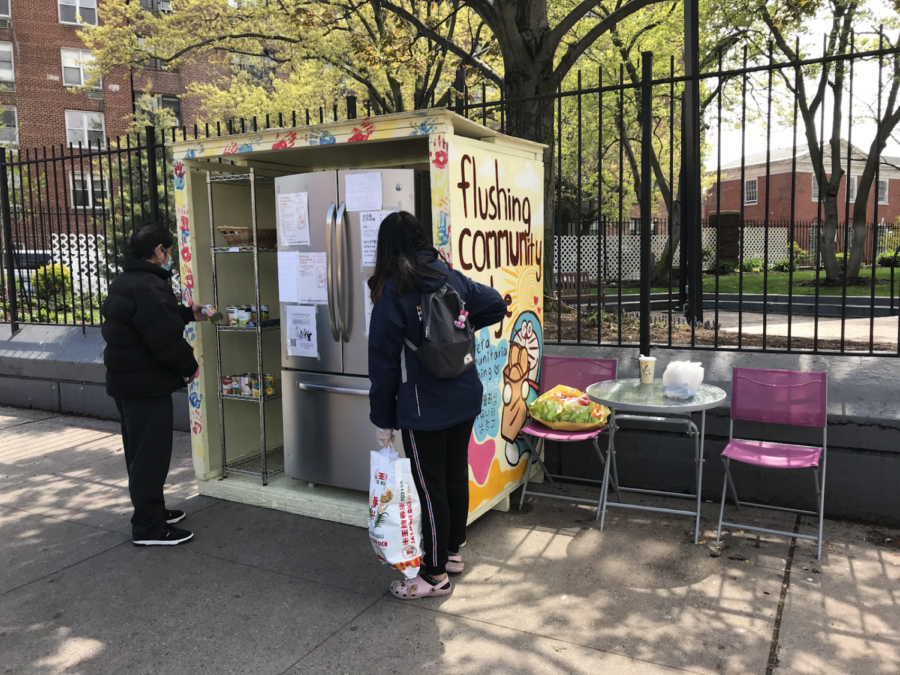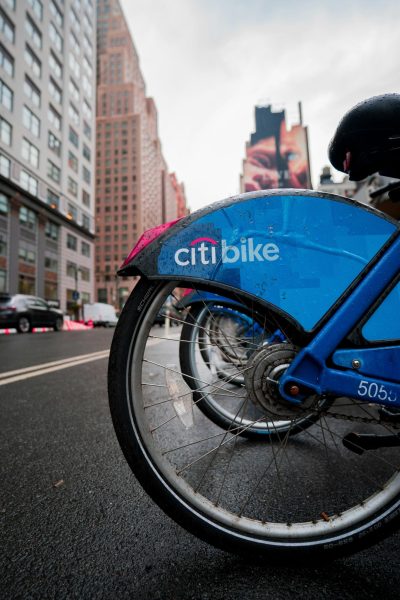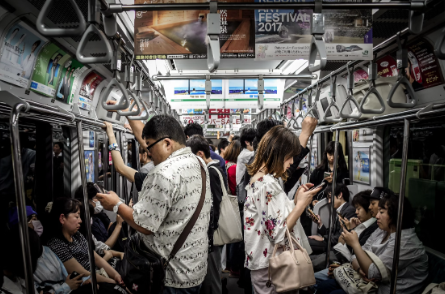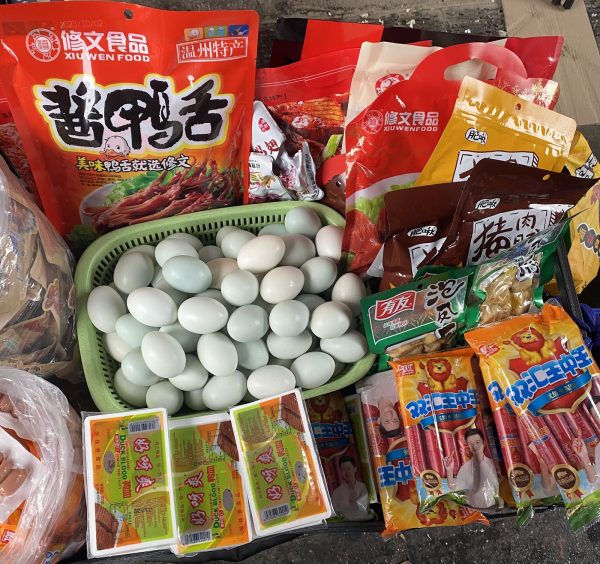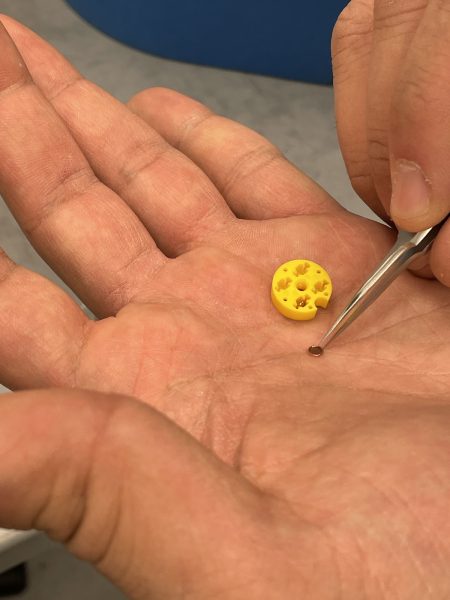Celebrating the One Year Anniversary of Community Fridges
New York City residents from all five boroughs have come together in order to provide each other with food necessities and assistance in the midst of COVID-19.
The Flushing, Queens community fridge is very popular. The food items, beautiful decorations, and seating all serve and inspire the residents who stop by.
Weeks after New York City officially went into lockdown last March 2020, residents already living with food insecurity had their situation worsened by the Coronavirus pandemic. On top of this, with unemployment rising and schools closing, some of the city’s most vulnerable groups had to find solace in food pantries and soup kitchens. One of the biggest helping hands were community fridges; they have been established in each borough and have helped to feed thousands of people across many communities.
The special thing about these community fridges is that they were started by ordinary New Yorkers who saw others in need of help. From everyday people to small businesses or mutual aid networks, these community fridges were set up as a place where people could grab what they needed with no questions asked. And for many — if they did not qualify for government aid, if they had an undocumented status, if they did not have access to information regarding resources for help, or if they just experienced general food insecurity — the fridges became an essential resource in fighting off hunger on a daily basis.
Those who need goods can find a local community fridge using one of the many map locators that delineates their locations by borough. The volunteers who run these fridges are always open to receiving donations, and they are also looking for volunteers to maintain the fridges. Here is a step-by-step guide on how to get started if you are interested!
One of the city’s more popular community fridges is the Flushing Community Fridge, which was made possible by the Free Synagogue of Flushing. The Free Synagogue of Flushing teamed up with local leaders and the Youth MinKwon Center’s Youth Empowerment Program to establish their community fridge. From getting the fridge to gathering items to put inside and decorating the exterior, local youth leaders made it happen. Its professional staff and Board of Trustees led a successful crowdfunding campaign that raised over $2,600 for the fridge, which was mainly raised through small donations.
Residents and local businesses are welcome to put food in or take food out. By alleviating the pressure put on existing organizations and providing essential goods free of charge, the Community Fridge is a new mutual aid initiative addressing food insecurity and food waste.
Although community fridges have been a tremendous help, there are many obstacles that organizers have had to face. For example, there was a need to educate the community about food equity in order to ensure that the community understood how to receive the help they need while still thinking about others who come after them. After all, the continued success of the fridges is in part due to the ‘give and receive’ approach, which ensures that no one person or family takes too much out of a fridge, so that items can go around and be replenished in a timely manner by other people who have the means to give.
Souksavat “Souks” Soukhaseum, director of community affairs at the Free Synagogue of Flushing, said “having an immigrant background and coming to America, we would access food pantries weekly just to get by, so to be able to give back to the community is a great feeling.” He, among many others in the synagogue, have connected with the community because it is “great to serve such a diverse community made up of almost 60% of immigrants,” like himself.
In order for community fridges to keep on running, such as the one in Flushing, Queens, amongst many others, local members of the community as well as non-local ones, must keep coming together and celebrating community as they have done so successfully over the past year.
“Having an immigrant background and coming to America, we would access food pantries weekly just to get by, so to be able to give back to the community is a great feeling,” said Souksavat “Souks” Soukhaseum, director of community affairs at the Free Synagogue of Flushing.
Chanel Richardson is an Arts & Entertainment Editor for 'The Science Survey.' She enjoys how journalism can uncover the truth about important matters...
Miaoting Zhen is a Staff Reporter for ‘The Science Survey.’ She finds journalistic writing to be very appealing because of its informative yet simple...

